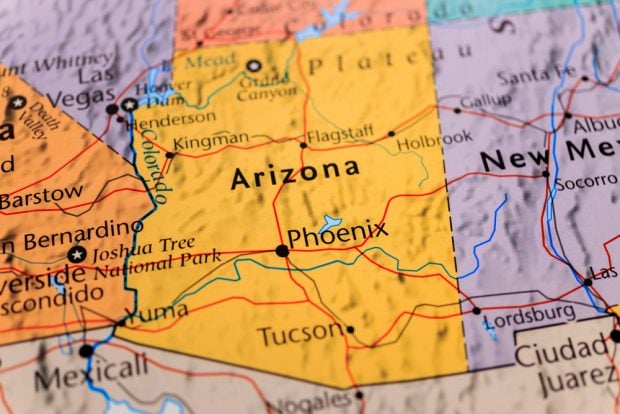
Paying for college usually involves big checks and often loans,even after scholarships are awarded and discounts applied. Now athird way to finance the rising cost of higher education, known asan income share agreement, is getting some traction.
|ISAs are a substitute for loans. Instead of a student repayingthe money they've borrowed plus interest starting soon aftergraduation, they forfeit a portion of their employment earnings fora number of years, usually up to 10.
|The percentage of income collected and the duration of theforfeiture depends on a student's major, and payments are usuallysuspended when they have little or no income.
|A student with a tech-related or business-related major willlikely have an ISA that's shorter in length with a smallerpercentage of income collected than a student majoring in Englishor anthropology.
|Whether or not an ISA costs a student less than a loan willdepend on the exact terms of the ISA versus the terms of a loan forthe same amount. Also key is whether the ISA sets a cap onhow much money will be paid out.
|ISAs are usually restricted to rising juniors, students in thesecond semester of their sophomore year who have declared theiracademic major. With that information in hand, the ISA provider cancalculate the percentage of a graduate's income that will be usedto repay the funding.
|Purdue University, a public land grant university in WestLafayette, Indiana, has distributed about $2 million to 160students via its Back-a-Boiler ISA program, which started in2016.
|Lackawanna College in Scranton, Pennsylvania, and ClarksonUniversity, in Potsdam, New York — bothprivate institutions — have started ISAprograms more recently. All three are working with Vemo Educationto design and implement their ISA program. Lumni is another firmthat designs and manages ISAs in the U.S. and is also involved inLatin America.
|In early February another firm, Paytronage, founded by twograduates of the Wharton School at the University of Pennsylvania,introduced a variation on the same theme, an online marketplacethat connects institutional sources of capital to studentsinterested in ISAs. Financing comes from investors, notuniversities or their foundations as is usually the case foruniversities offering ISAs.
|Proponents of ISAs extoll the flexibility of the programs: theability to pause payments during unemployment or big declines inincome — most programs allow pauses ifincomes decline to levels near 1.5 times the poverty rate (around$20,000 for individuals) — and theprogressive nature of the obligation since the income forfeituresare linked to a graduate's earnings, not to a set interestrate.
|Critics say the programs resemble indentured servitude becausethey bind graduates to a contract that requires them to give up aportion of their income over a number of years.
|Kevin James, founder and CEO of Better Future Forward, whichworks with another nonprofit, College Possible, to help low-incomestudents afford college through ISAs, doesn't buy thecriticism.
|“We think of ISAs as a progressive financing tool that basicallyalign payments with ability to pay,” says James. And aftergraduation a student with an ISA has the freedom “to do what theylike with their life … to make the choices they want to make,” saysJames noting that is is not necessarily the case for students whohave taken out loans. They have to find a way to make their loanpayments.
|James, as well as Zach Pelka and Connor Swofford, the foundersof Paytronage, recommend that students first take the maximumsubsidized federal loan before looking for an ISA. They agreethat ISAs are a good substitute for Parent Plus loans, which arenot subsidized, and private student loans, which charge higherinterest than federal subsidized loans.
|Mark Kantrowitz, a nationally recognized expert on studentfinancial aid, scholarships and loans, says ISAs are very much likeloans, each with a set amount owed and a fixed monthly payment,though they use different payment streams. But he also says ISAscan be particularly helpful to low-income students because theyshift the risk of failure of repayment from students toinvestors.
|The market for ISAs could potentially grow if Congress passesthe Investing in Student Achievement (ISA) Act of2017, introduced by Sen. Luke Messer, R-Ind., and Rep. JaredPolis, D-Colo., which creates a legal framework that allowscolleges and private investors to more easily facilitate incomeshare agreements, say Pelka and Swofford.
|The bill, which resembles one introduced previously that neveradvanced, would establish consumer safeguards in ISAs includingcaps on payments based on income and length of contract, butit would also classify ISAs as qualified education loans, whichcould not be discharged through bankruptcy and would not be subjectto state usury laws.
|Complete your profile to continue reading and get FREE access to CUTimes.com, part of your ALM digital membership.
Your access to unlimited CUTimes.com content isn’t changing.
Once you are an ALM digital member, you’ll receive:
- Critical CUTimes.com information including comprehensive product and service provider listings via the Marketplace Directory, CU Careers, resources from industry leaders, webcasts, and breaking news, analysis and more with our informative Newsletters.
- Exclusive discounts on ALM and CU Times events.
- Access to other award-winning ALM websites including Law.com and GlobeSt.com.
Already have an account? Sign In
© 2024 ALM Global, LLC, All Rights Reserved. Request academic re-use from www.copyright.com. All other uses, submit a request to [email protected]. For more information visit Asset & Logo Licensing.









